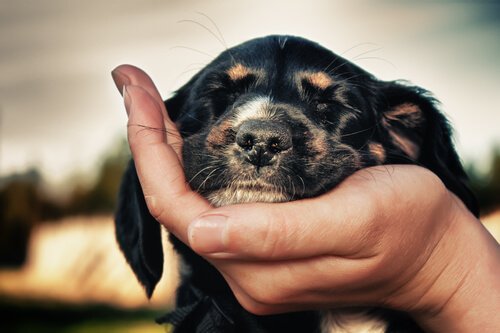What is a Dog's Third Eyelid?


Written and verified by the lawyer Francisco María García
Some animals have body parts that humans don’t have and they are often ignored. However, these body parts are very important for the animal’s well-being and a dog’s third eyelid is definitely one of these body parts.
By not paying attention to your pet’s body, means you’re not taking care of your dog properly, which happens quite often with a dog’s third eyelid.
It is also known as a Nictitating Membrane, it appears when the animal experiences a small scratch or injury. This means that it’s not some sort of symptom or is anything to worry about. It’s simply a sign that your dog’s natural defense mechanisms are functioning properly.
What Actually is a Third Eyelid?
It’s basically a membrane of connective tissue. It doesn’t contain any muscles, hair, or other coating, but you can see it when the eye senses a potential hazard. In other words, it’s a natural reflex.

The way it works is quite simple. At the moment of a possible injury or impact, the tissue covers the eye. The membrane appears within microseconds and then goes back to its normal position once the danger is gone.
There is no need to worry when you see your dog’s third eyelid. However, if it changes in anyway, this could be considered a mild health problem. In such case, the first thing you should do is go to the vet for an eye exam to look at the condition of the membrane.
Advantages of the Third Eyelid
It’s main purpose and advantage is providing protection for the eye. It’s also useful for getting rid of ulcers and even keeps the eye well hydrated. In fact, it’s responsible for up to 40% of a dog’s tears, and it helps fight infections. It’s coating allows the antibodies to fight against micro-organisms.
Finally, its natural movement helps remove foreign bodies and waste from the eye. In other words, it works like a little windshield wiper.
It’s not always noticeable, but if you ever see a white film covering the eyes, then it’s the nictitating membrane. The real problem is when it hasn’t returned to its normal position after more than five or six hours.
Cherry Eye
Sometimes, the nictitating membrane moves and doesn’t return back to its position and is considered to be in a prolapse. This is called Cherry Eye, and it can take place due to a hereditary condition, or simply because the tissue is weak or dry.
To tell the truth, this is one of the most common conditions in dogs’ eyes. It’s also worth pointing out that it’s more common in some breeds than others. The British Bulldog, Boxer, Pekingese, Chihuahua and Neapolitan Mastiff get it the most.
In such breeds, the third eyelid is almost in constant use. However, any dog of any age can experience a total prolapse of the membrane and thus require medical attention.

What to Do in The Case of a Prolapse
There is no medicine that can stop this condition. So, you can only resort to surgery in order to saturate the tissue and have it recover. When a prolapse occurs, the logical thing is to go straight to your vet.
In regard to the side effect of this condition, cherry eye doesn’t mean that your dog is experiencing lots of pain or is injured. On the surface everything may look fine and the symptoms are practically unnoticeable. However, not treating it could lead to other medical conditions such as dry eye or conjunctivitis.
It’s not recommended to remove the membrane. What would happen if it’s removed? This would imply permanent dryness of the eye. Hydration is greatly important for protecting the eye in any animal.
In conclusion, a dog’s third eyelid is something completely natural, normal, and plays an important role in protecting their eyes. It’s nothing you should worry about. However, if you notice anything out of the ordinary, then you should go straight to a specialist.
This text is provided for informational purposes only and does not replace consultation with a professional. If in doubt, consult your specialist.